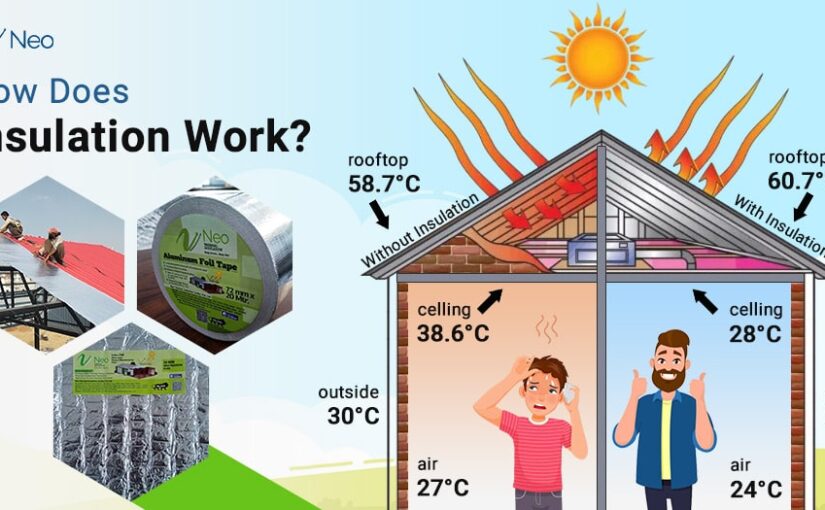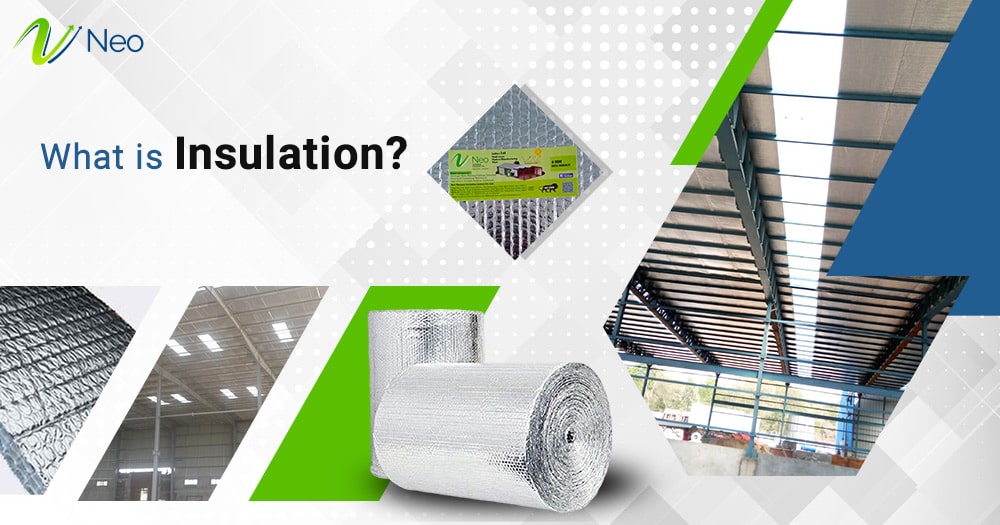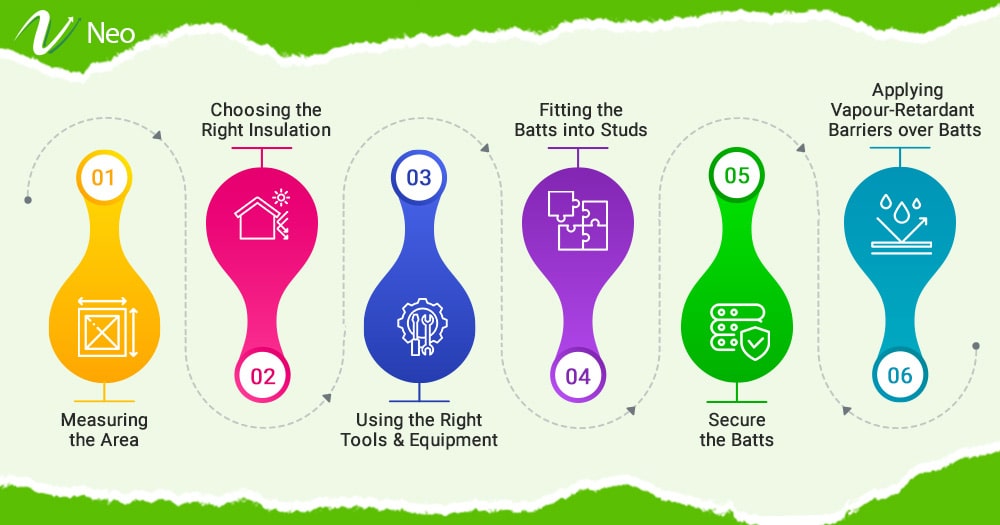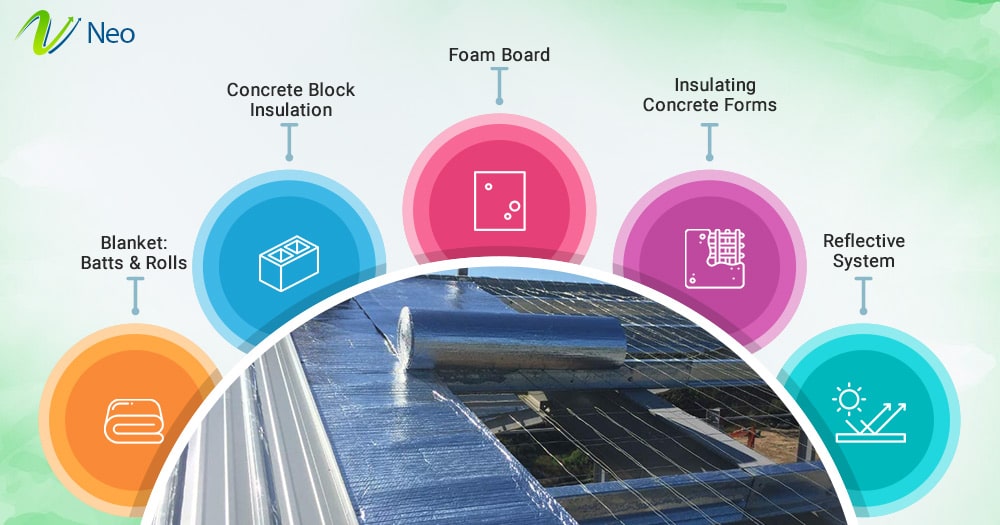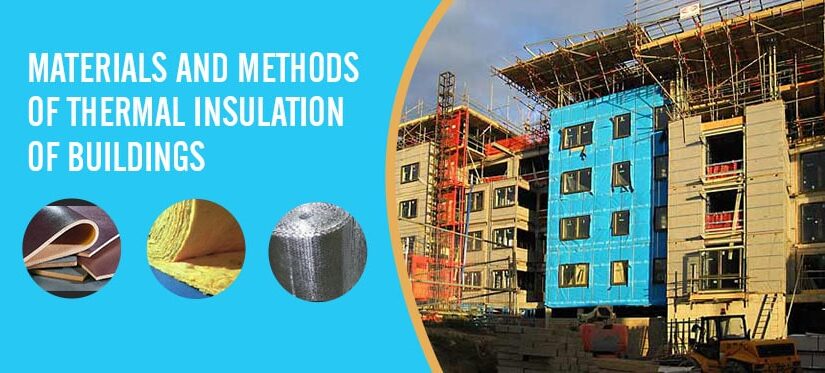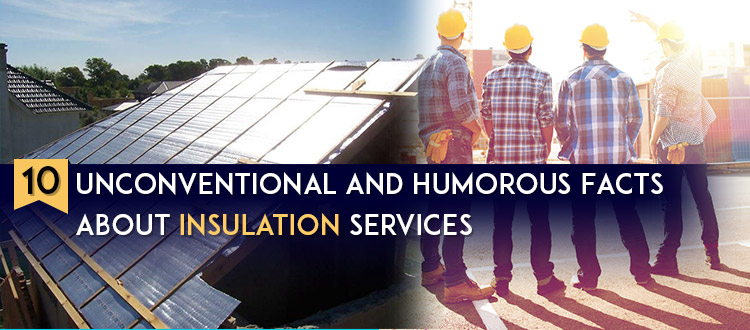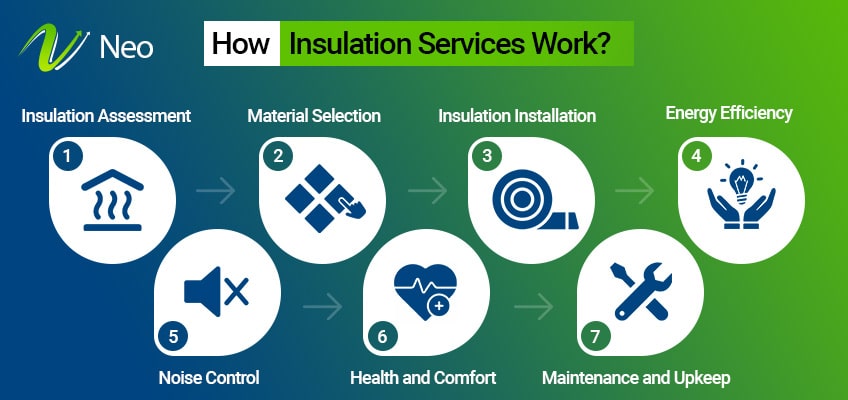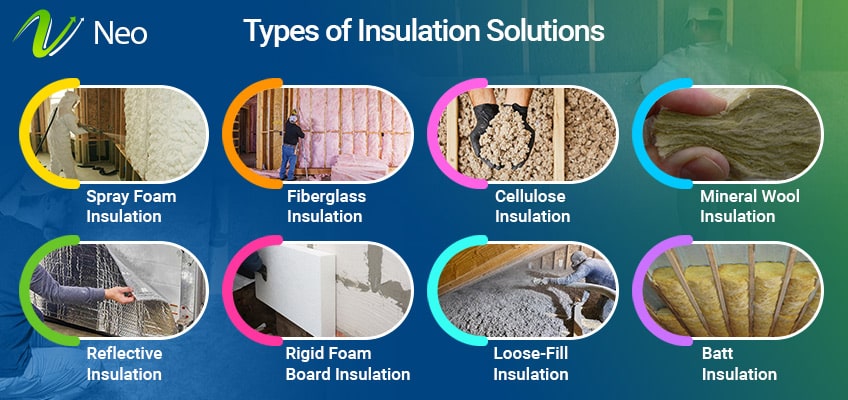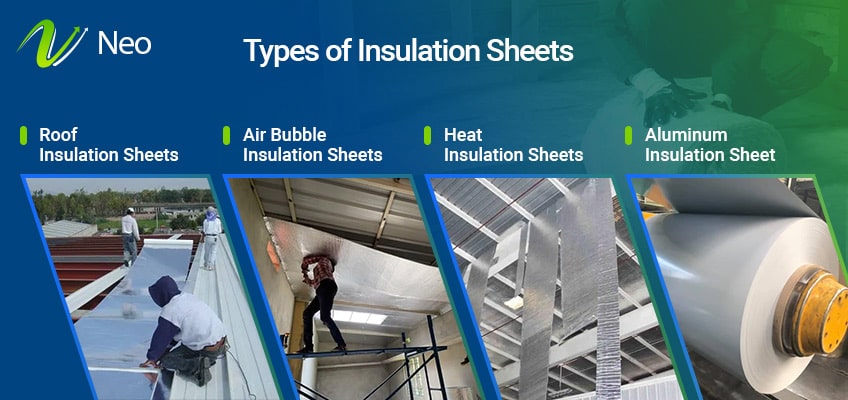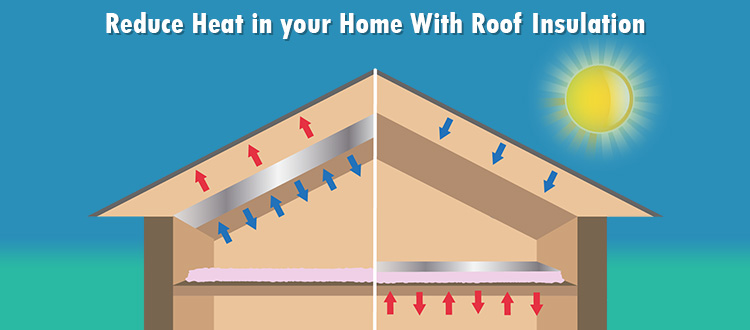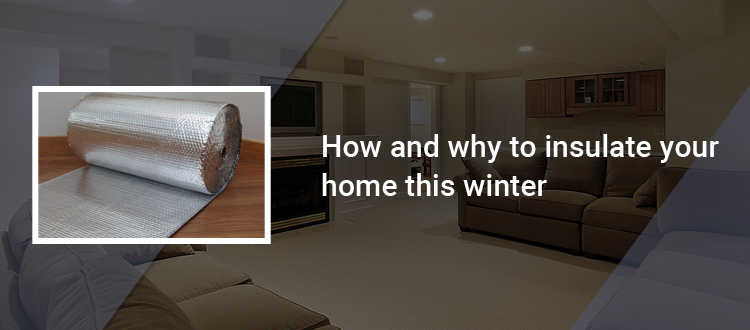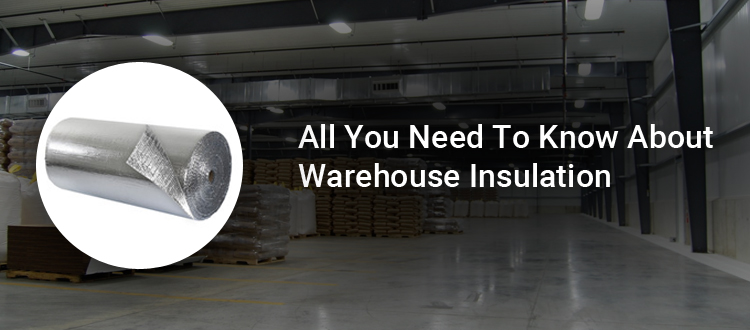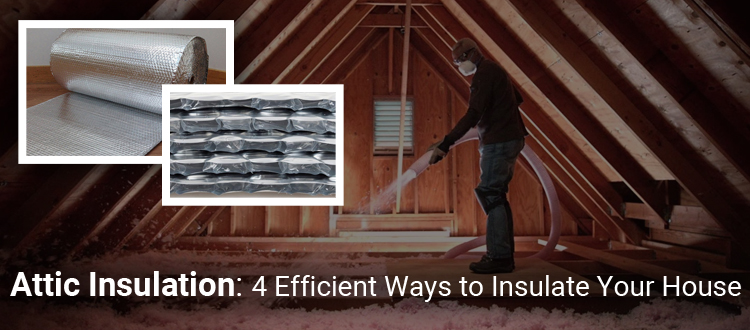Thermal insulation is a great solution for people worldwide who prefer comfortable living spaces. An alternative to eclectic cooling and heating systems, thermal insulation packs the house, office, warehouses, machines, and almost everything to prevent the impact of external temperature.
Still, have you ever wondered “how insulation works” and how it keeps our home warm or cool despite the external temperature? Today in this blog, we will talk all about the working mechanism of insulation and its types and benefits.
What is Insulation?
Thermal insulation is basically the solution that comes in various forms like spray, blocks, sheets, foam, and much more. The core purpose of insulation solutions is to prevent external heat or cold from entering the space and maintain a comfortable living temperature without the use of any energy-based heating or cooling system. This solution basically keeps the inner and outside temperatures disconnected so that they don’t interfere with each other.
As per Precision Business Insights, the thermal insulation market was valued at $28.6 billion in 2022, which is all set to grow with a CAGR of 7.2% between 2024-2030. The market is all set to achieve a valuation of $35.6 billion by 2029. Having gone through the ever-growing market and increased adoption of insulation products around the world, let’s understand the definition and how does insulation works.
Want to know How Insulation can Transform your Comfort?
How does Insulation Work?
To make the insulation work, sheets or blocks are installed over/under any surface. These layers restrict heat loss and heat movement. So, the outside temperature is trapped inside the wall only and does not enter the room. Similarly, inside temperature is kept inside the space only. This mechanism enables the insulation solutions to keep the room warmer, cold, or a comfortable temperature as per personal preferences.
Thermal insulation can even reflect radiation as well as decrease the conduction potential and convection. Materials with a low conduction rate are used in the insulation which prevents the heat from flowing from one surface to another surface. Some insulation sheets, depending on personal choices and quality, even help to deal with moisture risk, fire hazards, and noise disturbance.
There are different parts of the house of any property that need to be insulated to maintain the efficient temperature throughout the property. Here are the main types of insulation that enable the owners for a comfortable living-
Roof Insulation
Roof insulation sheets, as implied by their name, are primarily deployed in the roof section of a building. Insulating materials with reflective properties are used for the same that reflect back the sunlight and don’t allow the external heat to enter the premises.
Wall insulation
Wall insulation sheets are installed inside or outside the wall of the house. These sheets trap the heat inside the wall and thus maintain a comfortable temperature inside the room or any space.
Ceiling insulation
Attic insulation or ceiling insulation is installed in the inner upper layer of the house that doesn’t allow the heat or cold to enter the house from the top area.
Floor insulation
Floor insulation is mainly used in the winter to keep the floor warm. The insulation sheets are installed beneath the floor that prevent the low temperatures from entering the room via the floor.
What is the Process of Insulation?
Insulating a particular area or surface requires utmost care and the professionals have to follow a certain procedure to ensure that the thermal insulation process is efficiently carried out. Here are the main steps that help in the process of insulation-
Measuring the Area
First of all, the professional measures the area of wall, roof, ceiling, floor, or any surface that has to be insulated. Width between the stud and measuring the wall gaps is the standard practice of measurement which ensures that insulation works efficiently.
Choosing the Right Insulation
In this step, the installation professionals choose the right insulating material after assessing the area that needs to be insulated as well as the requirement of the client. Majorly, the R-value plays a significant role in determining the right material.
Using the Right Tools and Equipment
It is very important that whoever installing the thermal insulation uses the right tools and equipment along with a PPE kit if necessary during the process. It makes sure that person-in-charge doesn’t get injured.
Fitting the Batts into Studs
Having measured the surface, the batts of insulation are cut down in the perfect shape and sizes. These batts are then fitted into the studs to insulate an area.
Secure the Batts
To ensure that batts don’t come out of the studs, a staple gun is used to attach the paper lining every 7 inches.
Applying Vapour-Retardant Barriers over Batts
In the end, a vapor-retardant barrier film is applied over the insulation which helps to maximize the thermal potential of the insulation and achieve better results.
Types of Insulation and Their Working
There are different types of thermal insulation with different qualities, costs, purposes, and the way insulation works. Here are the main types of insulation that are used widely by people in their houses, offices, warehouses, and other spaces.
Blanket: Batts and Rolls
This insulating material is made up of fiberglass mineral (slag or rock) wool, natural fiber, and plastic fibers. This insulation is mainly used in new construction projects for acoustic benefit. Talking about homes, it is mostly used in attic insulation for better temperature maintenance.
Concrete Block Insulation
Concrete block insulation is made up of foam boards that are fitted outside of the wall or inside of the wall during construction. Mostly, air is incorporated into this insulation to increase its R-value. This insulation is helpful in waterproofing during backfilling.
Foam Board or Rigid Board
Foam boards or rigid boards are made up of polystyrene, phenolic, or polyurethane. These are mostly used in unfinished walls, floors, or ceilings. It is applied in commercial and residential buildings that prevent the air from entering the premises.
Insulating Concrete Forms
Made up of foam boards and foam blocks, this insulation is used for the foundation walls in new constructions. Along with maintaining the temperature comfort, this insulation is used widely to incorporate strength into the structure.
Reflective System
As the name suggests, this solution reflects back the heat and doesn’t allow the temperature to enter inside the premises. It is made up of cardboard, polyethylene bubbles, and plastic films. This insulation is used in buildings with high sunlight exposure.
What is The R-value of Insulation?
Insulation work involves understanding how insulation functions. R-value simply refers to the capability of the material to prevent the surface from heat and reflect back or lock the high temperature inside the surface only. The higher the R-value, the better will be the resistance, and thus more effective the material to prevent the internal temperature from getting affected by the external temperature.
The requirement of R-value during insulation differs from area to area on the basis of their regular day temperature. Different insulating materials have different R-values and the customers choose the right insulation material after analyzing factors like requirements, area, budget, and personal preferences.
Explore our Range of Insulation Solutions Today!
Benefits of Thermal Insulation
There are a range of benefits that thermal insulation can provide to the building. Here are some of the advantages that you can leverage by choosing the right thermal insulation for your place-
- Thermal insulation helps save a lot of energy by preventing the external heat or cold from entering the house. The reliance on electric heating and cooling systems decreases which reduces the utility bills.
- The dependence on the electricity supply decreases into fractions which saves you a lot of money.
- Electrical heating and cooling systems cause a range of negative impacts like global warming and carbon footprints to the environment. Thermal insulation solutions, on the other hand, are environmentally friendly.
- Thermal insulation has been proven very effective for its acoustic properties as it doesn’t allow outside noise to enter the premises.
- Most of the thermal insulation products are fire resistant which makes sure that your property is not exposed to fire hazards.
- Thermal insulation prevents moisture and condensation in a building which helps to maintain a stable and comfortable temperature.
- Thermal insulation products come with a long-life warranty that brings down the maintenance costs into fractions.
Choosing The Right Insulation For Your Home
While there are ample range of insulation products that will help you get a comfortable living, what is more important for you is to choose the right insulation provider. You need not to worry about how does insulation works as Neo Thermal Insulation is there for you to answer all the questions and suggest the right insulation material according to your needs. All of our products are of high quality and require least maintenance. Moreover, we provide our services pan India along with door-to-door assistance post-installation. So, choose Neo Thermal Insulation for all your insulation needs.
FAQ for Insulation Work
What is the Purpose of Insulation?
The foremost purpose of insulation is to restrict the outside temperature inside the house and maintain a comfortable living temperature. However, there are many other purposes like acoustic benefits, fire resistance, water leakage, and more that come with thermal insulation.
What is the basic Principle of Insulation?
Thermal insulation restricts the movement of heat through the surfaces. So, the outside temperature can not move inside the house and vice-versa. Thus, it helps to keep the house or any space cool or warmer for a longer time.
Which type of insulation is best?
Foam insulation is considered the best one that creates the air seal in your space. Thus, maintaining the same temperature for a longer time saves you a lot in electricity and energy utility bills.
How Insulation Works in Your Home?
Answer- Insulation when applied in your home, doesn’t allow the external temperature to come in contact with the inside temperature. As there is no connecting point between the external and internal atmosphere, the space remains at the temperature that you prefer for a longer time.
